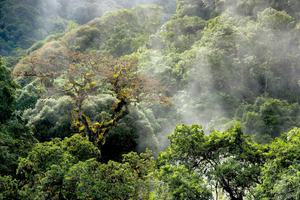A massive volunteer effort to digitize World War II-era U.S. naval logbooks is helping fill an important gap in the climate record.
To understand how humans have altered the climate, scientists must first determine what the climate looked like previously, and ship logbooks are essential to this work, providing a historical account of weather on the high seas. However, there are large gaps in the weather record during World War II, when hostilities stifled commercial shipping.
To fill in that gap, scientists sought to digitize recently declassified logbooks from 19 U.S. warships stationed in the Pacific during the war. Among these were the battleships USS Pennsylvania and USS Tennessee, which suffered losses in the attack on Pearl Harbor but remained in service through the end of the conflict.
A page from the logbook of the USS Farragut records the weather on the day of the attack on Pearl Harbor. U.S. Navy
Scientists enlisted the help of some 4,000 volunteers who, working online, transcribed more than 630,000 weather records containing more than 3 million observations that spanned the breadth of the Pacific Ocean, as well as parts of the Atlantic and Indian Oceans. The effort, led by researchers at the University of Reading, is detailed in a new paper published in Geoscience Data Journal.
The data gathered could help resolve a longstanding question about the past climate. Research suggests that the Earth was unusually warm during World War II, but data from the eastern Pacific is sparse, and potentially flawed. Sailors, presumably wary of shining a light at a hostile ship after dark, were more likely to record temperature data during the day, possibly introducing a warm bias into the weather record.
The U.S. Navy data, recorded at hourly intervals throughout the day and night, will help scientists better gauge temperatures during the war. “These ships saw action in the Indo-Pacific and Far-East, taking observations at times and places where few or no other digitized observations exist,” authors wrote. “These new observations and metadata will be invaluable for improving reconstructions of past climate.”




